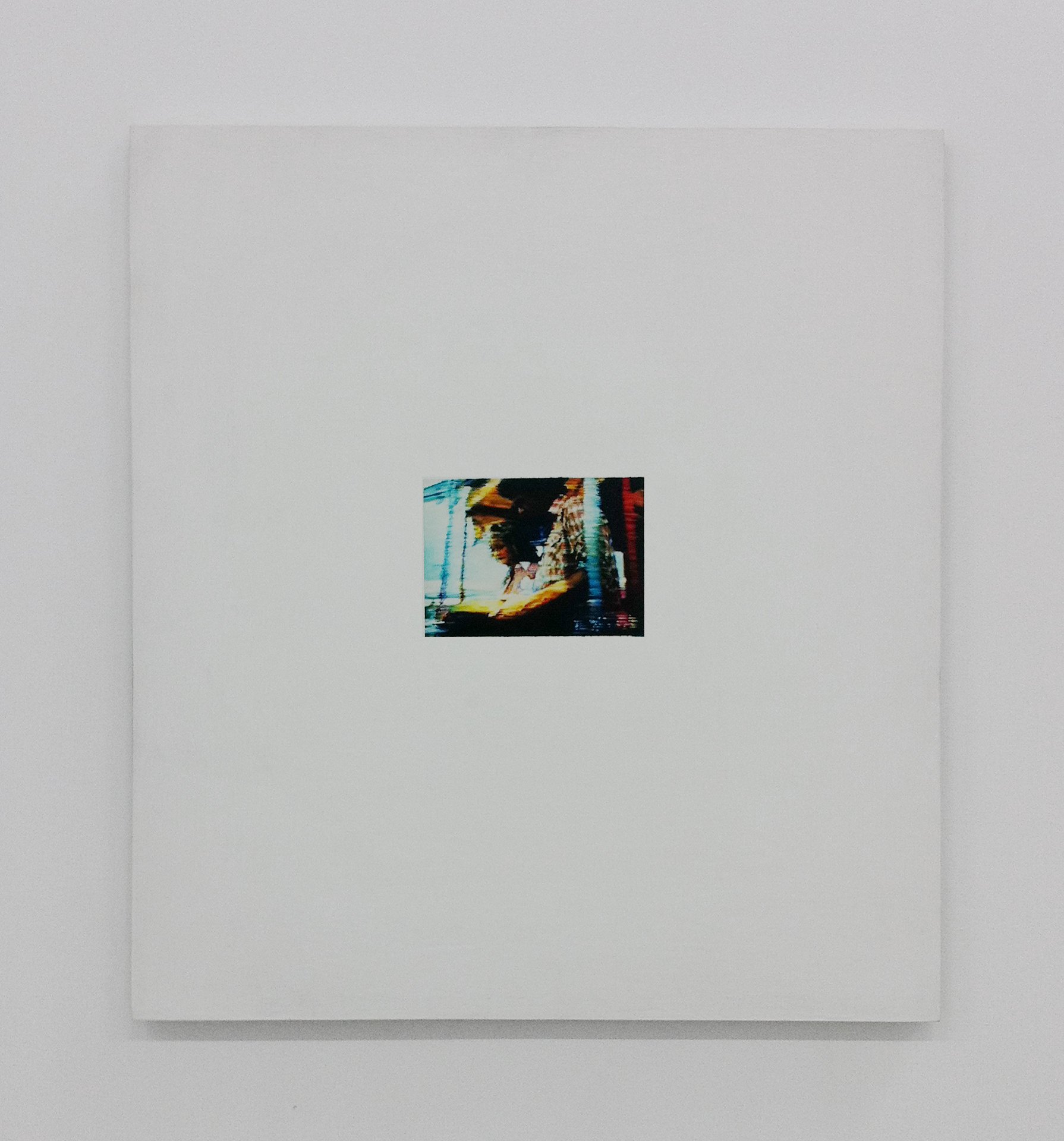Ed Johnson
21 April–17 May 2012, Brussels
Devil Among the Tailors, 2011, oil on plexiglas, 73,6x 106,7 cm
What I’m still shooting for, I guess, is that expansive feeling—that confusion—that results from incisive acts of seeing. Yet of late I’m increasingly ambivalent about ambivalence as an objective, in that claims for complexity, instability and contradiction have become uninspiring commonplaces.
This is not to say that we should stop asking what in images constitutes authenticity, what imitation, and resign ourselves to pastiche; rather, we should be as unsatisfied with inconclusive answers as we are with conclusive ones, and with statements like this one which conclude with expressions of cross-purposes, disorientation, and the exposure or affirmation of duplicity in the image, the artist writing them too proud of having discovered something that should have been abundantly clear to them in their late teens. It seems that photo-realists are among the worst perpetrators of this shtick, none more so than myself, ardently, unnecessarily illustrating (a) the artificial, designed, fictive qualities of the allegedly transparent photograph and (b) the substantial, fanciful, truthful qualities of the allegedly overwrought symbols of painting. So, too, we’re enabled by a tension between the all-encompassing stasis of photos and paintings as objects and the inexhaustible immanence of them as experiences. And though I’m not sure that what I’m doing can be called “-realism” anymore, there’s still the “photo-,” if always only as a pretext for painting, though who knows if, given the hard edges of the paintings in this show, what interests me in the photo is the painterly.
Insofar as one still recognizes the photographic in the work, I suppose one recognizes it as a representation of itself that elates when it does so as a representation of the painterly, just as one is elated by any mode of address or discipline or type that is so much of itself and so much of everything else, too.
When I used to stay up late, when I still had a TV, for a week or maybe weekly over the course of a month, around 3 AM, PBS would air these 80s-era Annenberg-funded educational films on Modern American Poets: Marianne Moore, Robert Lowell, William Carlos Williams. For the last of these, Allen Ginsberg sits by the Passaic River and explains why Williams’ poems matter, saying something to the effect that Williams dispensed with far-reaching metaphor: “What does this waterfall represent? It represents itself.” Not that it ceases to represent, but that it represents itself, and Williams’ poetry moves us because an overwhelming correspondence of things and their referents, of images and objects, of the haptic and the ethereal, underscores the gap between them so much more emphatically than any outright statement of their irremediable disjuncture; in Williams it is as though word and thing perfectly illuminate the other’s descriptive deficit, that is, the other’s descriptive potential; together, they’re whole, made for each other. I suppose this would be a best-case scenario for my work and my thought: I’m becoming a more adept debunker of phenomenological conspiracies that no one really ever believed in the first place, or believed only for the express purpose of debunking. The most unassuming objects of the world around us are encumbered with their own image, and the self-fulfillment of the object is also an act of great emptiness.
This brings me to something, finally, about the photo that, even if were to stop using it as inspiration for painting, would be no less valuable. When I’m taking a picture, even in those rare instances when I have no thought of a painting coming out of it, there is always just before the click a feeling that the present is vacated for a future memory. And what the photo does with memory, I think in some way the painting does with matter: each piece of paint is always the indication of an erasure, each color the anticipation of a different key.
One thing that anyone who has been interested in my work in the past might want to know about this show: there’s a big painting in the group, about 30 X 40 inches of edge-to-edge image. OK, that’s not that big, except by my standards, and though it took my body about a year to figure out how to make a smaller space of that expanse, in the end, strangely, the size seems a minor point, the only difference one of focal length. But, the big picture does highlight certain aspects of the miniatures - the disparity between an effect and its source, the slipperiness of color; the same one can look green in one place and red in another. And, in a small painting the truth of the illusion happens up-close (we’re projected into and accommodated by the little world it has created because we must accept its artifice), whereas the big painting convinces us at a distance; we’re always stepping back from it.
God, all of this is so literal and dumb, but maybe worth saying. The big piece is a landscape, sort of, as are all the other pieces in the show. It’s called Devil Among the Tailors.








